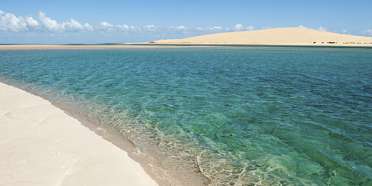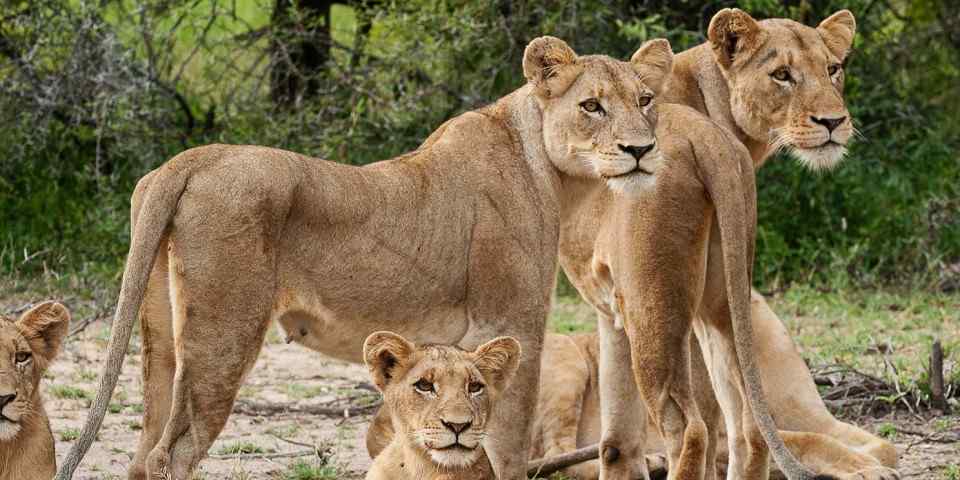
 US
US
Mary is an acclaimed travel writer and author of many Lonely Planet guidebooks, including South Africa, Tanzania, East Africa and Africa.
1 person found this review helpful.
Idyllic Islands, Beautiful Beaches & Adventurous Wildlife Watching
Mozambique is one of my favourite countries for its unique vibe, culture and spirit, its beautiful coastline and idyllic islands, its atmospheric towns and its wild bush interior. While it is not a safari destination as such, there are some wonderful wildlife experiences to be had. My two favourite parks are Gorongosa National Park, where you can spot animals in a beautiful setting while learning about local community conservation initiatives, and Maputo National Park, which protects a lovely section of coastline as well as a healthy population of elephants. Underwater safaris are also excellent. The Mozambican coast is home to several species of sea turtle and you can dive and snorkel with whale sharks and manta rays.

Ariadne is a renowned African wildlife photographer whose work is featured in many well-known guidebooks and magazines.
1 person found this review helpful.
Idyllic Beaches & Recovering Parks
Mozambique has some of the most beautiful beaches in Africa. Yet, its 2,500km coastline is remarkably unspoiled and undeveloped. Most tourism is confined to its islands: Bazaruto in the south and the Quirimbas in the north. Both archipelagos are renowned for their luxury lodges and fantastic diving opportunities.
Compared to many other countries in the region, Mozambique doesn’t have a lot to offer in terms of safaris, but there are a few gems. Maputo National Park offers a unique ‘beach and bush’ experience; the marine-wildlife viewing is out of this world, but the main reason for the reserve’s creation was to protect southern Africa’s last-remaining coastal elephant population. Gorongosa National Park is perhaps Mozambique’s hottest safari destination. Once known as the Serengeti of southern Africa, it is on a strong path to being worthy of this nickname once again. As the park has received higher protection, animals are coming back and the growing lion population is a good indication of a recovering ecosystem.
The Great Limpopo Transfrontier Conservation Area (GLTFCA) is currently undergoing a lot of development as well. This 100,000km2 Peace Park protects Kruger in South Africa, Gonarezhou in Zimbabwe and Limpopo, Banhine and Zinave National Parks in Mozambique. Zinave, in particular, is rapidly becoming a worthwhile safari destination. In recent years, thousands of animals have been translocated here and subsequently lions have turned up on their own account. Its proximity to Vilanculos and the popular Bazaruto Archipelago makes this exciting new Big Five destination a great addition to a Mozambique beach holiday.

Lizzie is a reputed guidebook writer and author of the Footprint guides to South Africa, Namibia, Kenya, Tanzania, Uganda and Zimbabwe.
1 person found this review helpful.
Bordered by the Indian Ocean Which Is Dotted With Tropical Islands Offering Beach Holidays and Burgeoning Game-Viewing
Mozambique’s 2,500-km-long sunny coastline features stunning white-sand beaches backed by swaying palms, and world-class coral reefs primed for swimming, diving, snorkelling and sunset sailing on traditional white-sailed dhows. It’s also well known for its super-friendly people and delicious food – think succulent prawns, piri-piri chicken, soft Portuguese rolls, and fresh cashew nuts and fruit straight from the trees.
Highlights include two clusters of postcard-perfect islands with their exclusive resorts – the six-island Bazaruto Archipelago off the coastal town of Vilankulo, and the 32-island Quirimbas Archipelago near the Tanzanian border. Then there’s the cheaper Inhambane region, loved by South African families, fishers and campers; here Tofo and Barra beaches are my favourites, where humpback whales, dolphins and nesting turtles might become potential company. I also recommend mangrove-covered Ibo Island and the coral-rock Island of Mozambique (Ilha de Moçambique) for their atmospheric, crumbling Portuguese colonial-era architecture, and there are excellent restaurants and good-standard hotels in the fast-developing capital Maputo.
Despite the coastline owning the spotlight, Mozambique’s national parks are rebounding thanks to greater protection and conservation initiatives like the restocking of large mammals. The two most accessible are: the beautiful Gorongosa, which is now home to elephant, lion, hippo, buffalo, crocodile, and numerous antelope (it’s famous for its big herds of waterbuck and sable); and Maputo National Park, with elephant, crocodile and hippo, and it’s also been restocked with zebra, giraffe and antelope such as impala and kudu, which have mostly come from Eswatini (formerly Swaziland).
Mozambique is one of my most-liked African countries and I’ve visited many, many times, both as a tour leader and on self-drive trips – the most epic being several weeks largely following the coast from Vilankulo all the way north into Tanzania. I’ve also crossed from Kruger National Park into Limpopo National Park. But you don’t have to be that adventurous, with flights landing at Maputo, Vilankulo, Inhambane and Pemba. Resorts can easily be combined with South Africa’s Kruger or reserves in KwaZulu-Natal, and hopefully as its parks improve further, a bush-and-beach safari will become viable in just Mozambique.

Philip is an acclaimed travel writer and author of many guidebooks, including the Bradt guides to Uganda, Tanzania, Kenya and South Africa.
Beaches, History … and a Bit of Safari
Mozambique is first, second and third a beach nirvana, fourth an area of historic interest, and maybe fifth or sixth a safari destination. Running all the way north from Ponta do Ouro (on the border with South Africa) to the mighty Ruvuma River (bordering Tanzania), the country’s 2,500km of Indian Ocean frontage is studded with palm-lined tropical beaches as attractive to sunbathers and swimmers as they are to snorkellers, divers and game fishers. The country also boasts a few compelling old ports, most notably Ilha do Moçambique, which served as the Portuguese capital from 1530 to 1898, and is one of the most atmospheric historic towns anywhere in southern Africa. By contrast, the country’s main potential safari destinations either suffered heavy losses to poaching during the years of civil war, or remain largely undeveloped. That said, the refurbished Gorongosa National Park is well worth a visit, and has the long-term potential to become as important an attraction as it was in the colonial era, while the almost inconceivably vast Niassa National Reserve in the far north is a magnet for truly intrepid travellers with their own 4WD and plenty of time. On our most recent visit, we were also very impressed with Zinave National Park, which is now home to all the Big Five (of which we saw rhino, buffalo and plentiful traces of elephant), and the bush-meets-beach vibe of beautiful Maputo National Park. Even so, the main reason to visit Mozambique is still undoubtedly its beaches, marine wildlife and historic towns – by comparison, the game reserves remain something of a sideshow.







